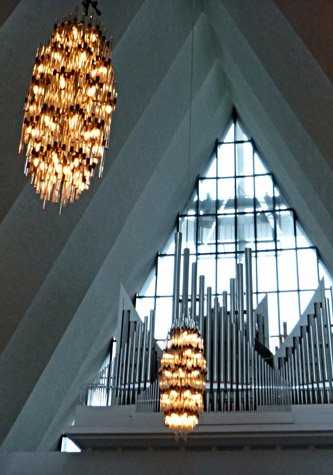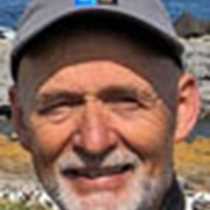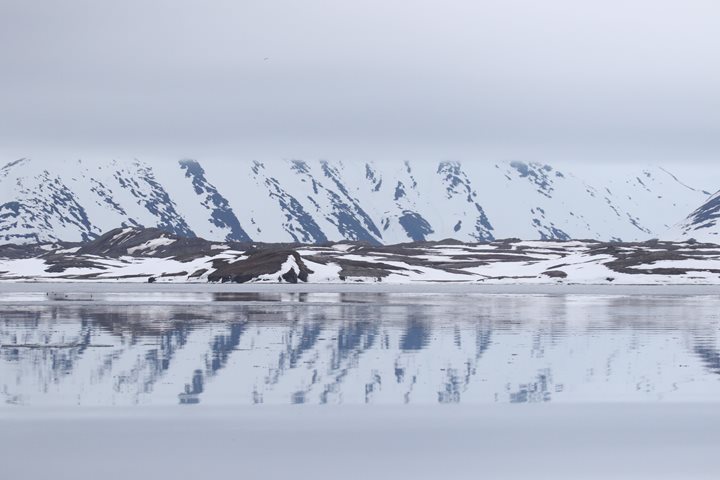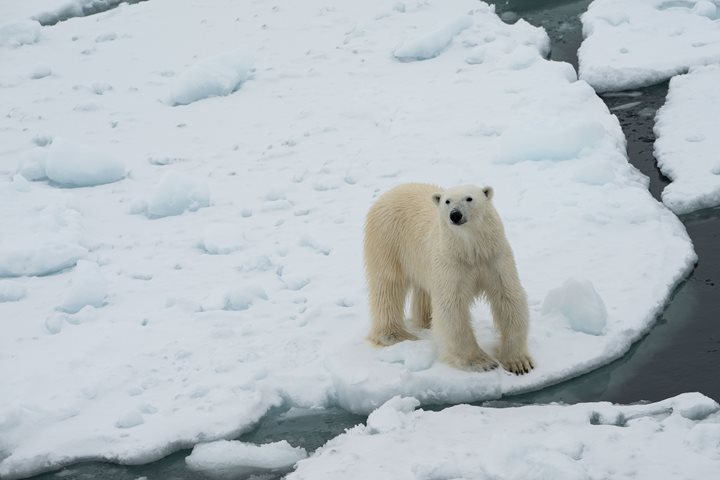Tromso is considered to be the gateway to the Arctic. It has traditionally been a waypoint for polar exploration, and is still a stepping stone for many who proceed further north today.
We arrived into Tromso in the morning, at breakfast time. On arriving here, visitors are immediately taken by the jagged, snow-capped mountains that surround and dwarf the city of over 70,000 people.
Our first stop when we ventured out into the city was the Arctic Cathedral. This modern church, built in 1965 and designed by Norwegian architect Jan Inge Hovig, mirrors its surroundings in a number of ways. Its white, pointed and triangular form hints at the shape of the surrounding mountains, as well as bringing to mind icicles. It is also said to resemble the aurora borealis, which is visible here during the winter.
We visited two museums this morning. The first of these was the Tromso Museum, associated with the University of Tromso. This museum focusses on the history and archaeology of the city and its surroundings. As well as artefacts ranging from the earliest Mesolithic settlements up to near-modern times, this museum also placed considerable emphasis on the culture and history of the Sami people of the area. As well as presenting aspects of their traditional culture, this display also sensitively outlined the various issues regarding their often precarious place within Scandinavian society throughout the past century.
As well as cultural history, this museum also had a number of natural history exhibits. Specimens of local fauna, both marine and terrestrial, were used to outline in an informative and fascinating manner their role and context within the north Norwegian ecosystems.
The second museum and our third stop this morning was the Polar Museum. This museum holds a collection of artefacts and information relating to the exploration of the European high arctic, as well as the early exploitation of Svalbard. Carefully assembled displays reconstructed the living conditions of early whalers, sealers and trappers alongside original artefacts recovered from 17th century settlements on the archipelago through archaeological excavation. A large number of artefacts associated with the two great heroes of Norwegian polar conquest, Fridtjof Nansen and Roald Amundsen, are held and displayed by the Polar Museum. These exhibits make a fitting monument to Norway’s legacy of exploration.
After departing Tromso that evening, we sailed past the island of Fugloya. This small but towering island is home to many thousands of puffins, and good conditions meant that we were treated to the sight of vast swarms gathering overhead as the ship came in close to its shore. Leaving the island and mainland Europe behind, we then turned north and sailed into a calm night on the Barents Sea, towards Bjornoya and, ultimately, Svalbard.









